If you’re like me and either can’t or prefer not to rely on dairy for your calcium needs, you might wonder how to keep your bones strong and healthy without reaching for a glass of milk every day.
The good news? Nature offers a delicious and diverse lineup of top non-dairy foods rich in calcium that can easily fit into your meals and snacks.
Over the years, I’ve found that embracing these non-dairy calcium sources has been a game-changer—not just for my bones, but for my energy and well-being too.
Let me take you through some of my favorite calcium-rich foods right now!
Contents
1) Chia Seeds
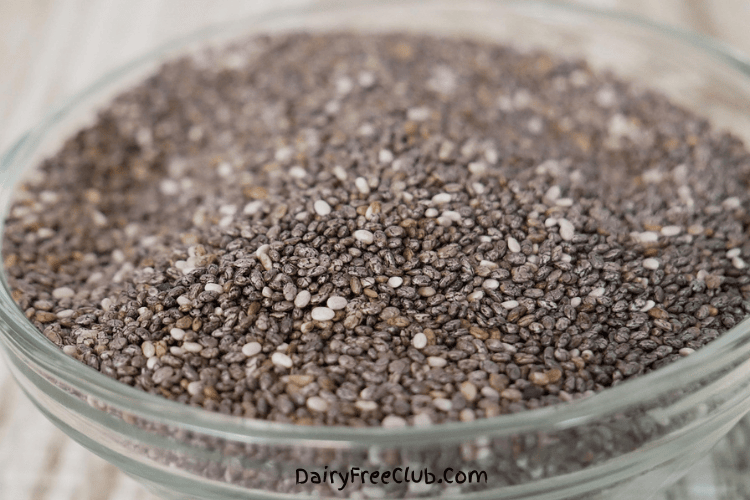
If you are looking for a simple way to boost your calcium, chia seeds are a great option. Just one ounce of chia seeds can give you around 17% of your daily calcium needs. This is about 180 mg of calcium in a single serving.
You can add chia seeds to oatmeal, smoothies, or yogurt. They blend well with many foods, and the taste is neutral, so it will not change your recipes much.
Chia seeds also provide extra nutrients like fiber and omega-3 fatty acids, making them a fantastic addition to your diet. You don’t need to eat them dry. You can soak them in water or milk alternatives to create delicious puddings with fruits and nuts.
If you are trying to avoid dairy, swapping in chia seeds is a good way to support strong bones. Keep a small container on hand so you can sprinkle them onto meals as needed.
2) Almonds
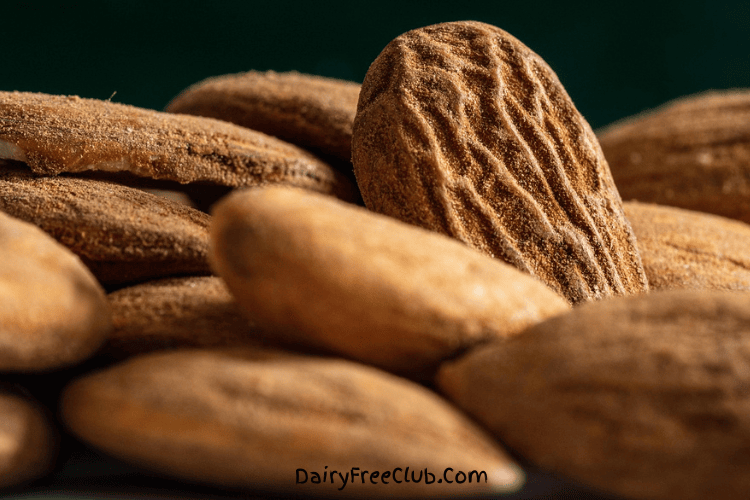
You can enjoy almonds as a simple snack or add them to different dishes. They are one of the highest non-dairy sources of calcium. Eating just a small handful helps boost your calcium intake.
Almonds not only give you calcium, but they also offer protein, healthy fats, and fiber. This means you get important nutrients that support your bones and help keep you full for a long time.
It’s best to choose unsalted, raw almonds; these are your healthiest option. You can easily sprinkle them on oatmeal, yogurt alternatives, or salads. It’s always good to carry some in your bag for a quick, nutritious snack during the day.
Remember to watch your portion size. Almonds are high in calories, so a small amount goes a long way. A serving of about 23 almonds, or one ounce, gives you roughly 75 milligrams of calcium. This helps support your daily needs without overdoing it.
3) Fortified Soy Milk
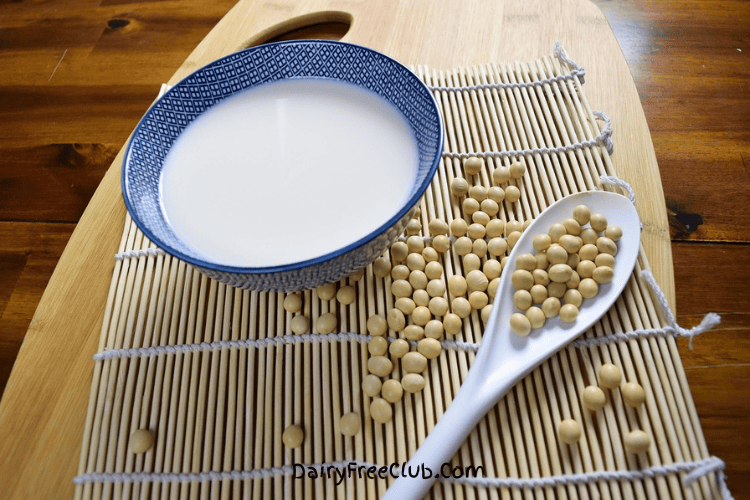
Fortified soy milk is one of the top non-dairy sources of calcium you can add to your diet. Many brands add calcium and vitamin D to make soy milk more similar to cow’s milk. Just one cup of fortified soy milk can give you around 20% of your daily calcium needs.
Soy milk is also high in protein, which helps support your muscles and bones. By drinking soy milk, you get calcium along with extra nutrients like potassium and B vitamins.
You might find that some brands are higher in calcium than others, so always check the label. For the healthiest choice, pick unsweetened soy milk to avoid extra sugar.
4) Canned Sardines
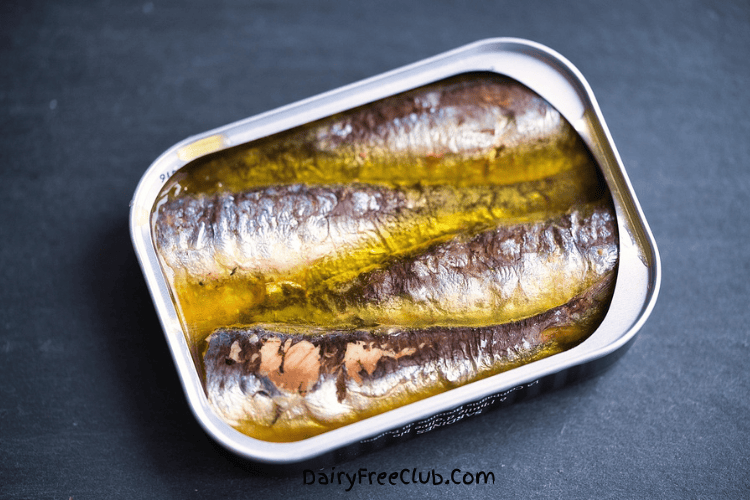
Canned sardines are a top choice if you want more calcium without dairy. They are one of the best non-dairy foods for boosting your calcium levels. You get about 350 mg of calcium in one small can when you eat them with the bones.
You should look for sardines canned with bones since the bones are soft and safe to eat. These tiny bones are what give sardines their high calcium value. Including them in your meals can help you reach your daily calcium goals more easily.
Sardines also have other benefits. They contain omega-3 fatty acids, which are good for your heart and brain. You can eat sardines on crackers, mix them with salads, or add them to pasta.
If you want a quick and easy way to get more calcium, keep canned sardines in your pantry.
5) Collard Greens
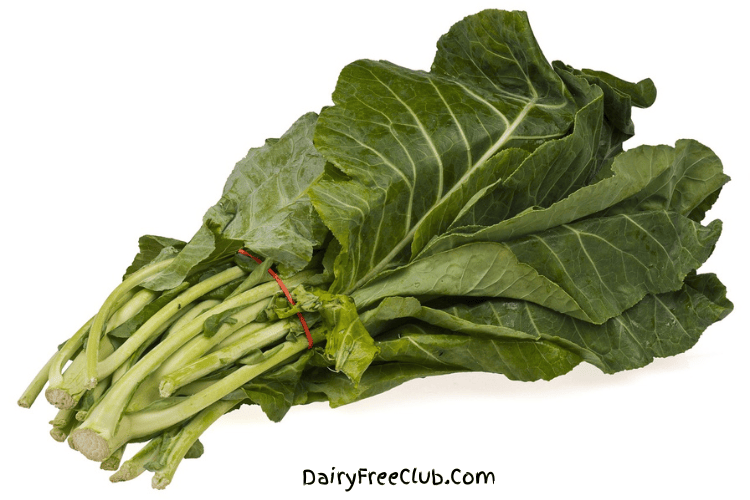
Collard greens are another impressive plant-based option. Eating these leafy greens can add a steady boost of calcium to your diet.
One cup of cooked collard greens contains about 266 mg of calcium. That’s over 20% of your daily calcium needs if you’re an adult. This makes collard greens one of the top non-dairy foods for calcium.
Collard greens are also low in oxalate, a compound that can block calcium absorption in your body. This means your body can use more of the calcium found in collard greens, compared to some other leafy greens like spinach.
You can cook collard greens by steaming, sautéing, or adding them to soups and stews. Try using them as a side dish or mixing them into salads for a simple way to get more calcium.
You can choose fresh or frozen collard greens to fit your cooking style and preferences.
6) Edamame
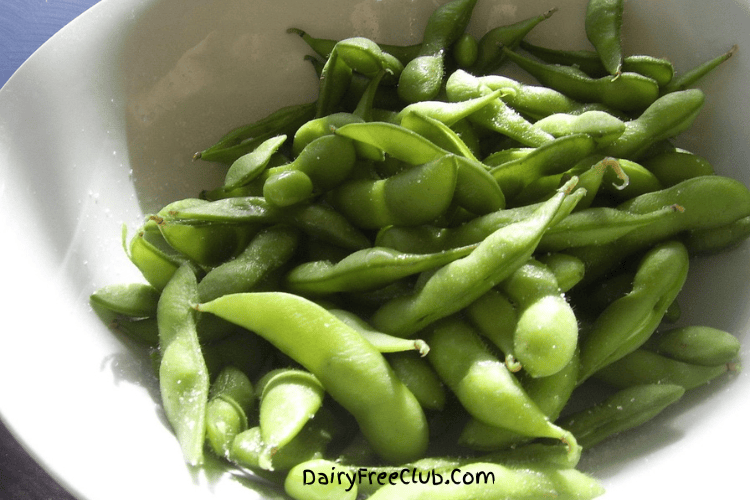
Edamame is a type of young soybean that you can find in the frozen section of most stores. When you’re looking for more calcium, these green pods are an easy choice. You can steam or boil them in just a few minutes.
One cup of cooked edamame gives you about 100 milligrams of calcium. That’s a good amount in a single snack or meal addition. Besides calcium, edamame also provides protein and fiber, helping you feel full and satisfied.
You can add edamame to salads or rice bowls, or even eat it alone with a pinch of salt. It’s easy to prepare and doesn’t need much seasoning. I always keep a bag in my freezer for fast, healthy snacks.
Choosing edamame is a smart way to increase your plant-based calcium. If you’re avoiding dairy or cutting back, try adding this food to your weekly meals. Your bones and muscles will benefit from the extra support.
7) Tofu with Calcium Sulfate

Tofu made with calcium sulfate provides a significant amount of calcium. When you choose tofu, make sure to check the label for “calcium sulfate” in the ingredients. This type of tofu has more calcium because calcium sulfate is used as a coagulant in the process.
Note that firm and extra-firm tofu usually have the highest amount of calcium. Just half a cup of this tofu can give you a good amount of your daily calcium needs.
You can use tofu in stir-fries, salads, or even scrambled as a breakfast dish. It has a mild flavor, so it absorbs the taste of other ingredients very well. Tofu is also high in protein, making it a double-win for your diet!
8) Broccoli
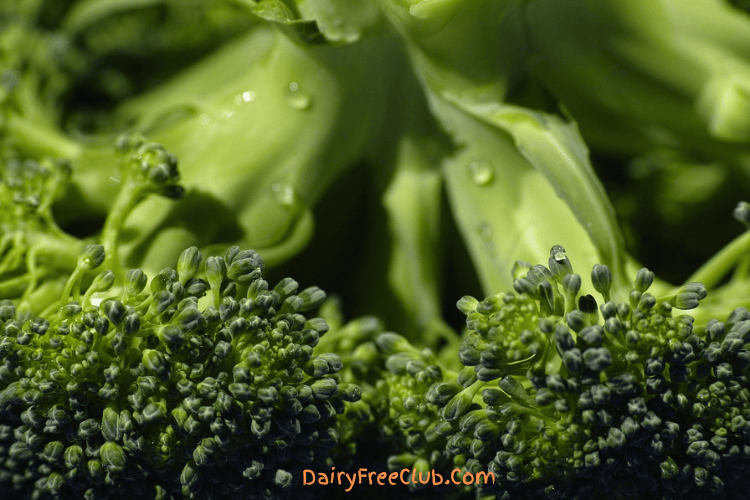
You might already know that broccoli is healthy, but did you know it is also a good source of calcium? Just two cups of raw broccoli provide around 90 milligrams of calcium. That makes it an excellent choice if you want to boost your calcium without dairy.
Adding broccoli to your meals is easy and flexible. You can eat it raw in salads, steam it for a quick side dish, or add it to stir-fries and casseroles. Broccoli also pairs well with many foods, making it simple to include in your diet.
Broccoli not only gives you calcium. It also has fiber, vitamin C, and other important nutrients.
Broccoli is truly a reliable option that you can eat often. So, make the most of it and add it to your regular meals and snacks.
9) Sesame Seeds

You might overlook sesame seeds, but they are a strong source of calcium. Just one tablespoon of sesame seeds can provide around 88 milligrams of calcium. This makes them a fantastic addition to your daily meals if you want to boost your intake.
You can add sesame seeds to salads, stir-fries, or sprinkle them on top of cooked vegetables.
The seeds also supply healthy fats and some plant-based protein, which are important for your nutrition. Choose unhulled sesame seeds when possible, as they contain more calcium than hulled ones.
Including sesame seeds in your routine is simple and takes very little effort. Make this change, and you give your bones extra support every day. This step empowers you to meet your calcium goals without depending on dairy products.
10) Tahini (Sesame Seed Spread)
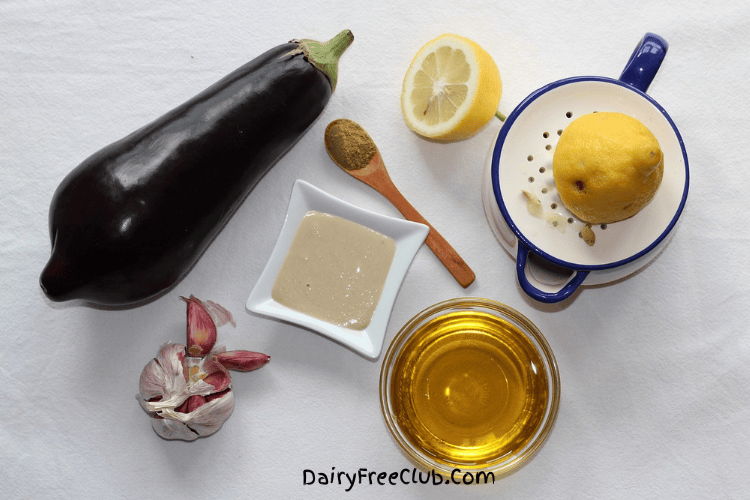
Tahini is made from ground sesame seeds and is often used in foods like hummus and salad dressings. It has a smooth, creamy texture and a rich, nutty flavor.
Just two tablespoons of tahini can give you about 130 to 180 mg of calcium. This is a good amount compared to many other non-dairy foods. Adding tahini to your meals can be an easy way to meet your calcium needs.
You can use tahini as a spread on toast, mix it into smoothies, or drizzle it over vegetables. I often use it in my recipes, like Hummus, Mashawsha, Buckwheat Bliss, or salads, and even cakes or biscuits.
Besides calcium, tahini also contains healthy fats, iron, and magnesium, which are important nutrients to support strong bones and overall health.
Next time you’re looking for a dairy-free way to boost your calcium, reach for tahini.
Why Calcium Is Essential for Your Body?
Any individual needs calcium every day for more than just strong bones, but also for muscles, heart, and nerves to function properly. Let’s take a look at these:
Calcium’s Role in Bone Health
Calcium is the main mineral found in your bones and teeth. About 99% of the calcium in your body stays in your bones and supports their structure. If you don’t get enough calcium, your body will take it from your bones, making them weaker over time.
It’s especially critical for children and teenagers to get calcium to build strong bones as they grow. We adults need it to slow down bone loss that happens with age, and if we don’t get enough calcium, we risk developing osteoporosis, which makes bones thin and easier to break.
Doctors often recommend you get the recommended daily amount of calcium through food, and if needed it supplements, too. Good calcium intake early and throughout life will help keep your bones healthy and strong.
Role of Calcium in Heart and Muscle Function
Calcium is also important for your muscles. When you move your muscles, such as your arms or legs, calcium helps them contract and relax the right way.
Your heart depends on calcium, too, to beat steadily. Calcium helps your heart muscles squeeze and pump blood to the rest of your body. If the calcium levels are low, it can cause irregular heartbeat or muscle cramps.
Calcium is also needed for nerve signals. Nerves use calcium to send messages between your brain and the rest of your body. Getting enough calcium lowers your risk for muscle spasms and keeps your heart and muscles working as they should.
Maximizing Calcium Absorption from Non-Dairy Sources
Getting enough calcium from non-dairy foods matters, but what you do with those foods is just as important. Your choices can help your body use more of the calcium you eat and prevent you from wasting this important nutrient.
Boosting Absorption with Vitamin D
Did you know that your body needs vitamin D to absorb calcium? Without enough vitamin D, even a diet rich in calcium won’t give your bones the support they need.
One of the best ways to get a good amount of calcium is by spending time in sunlight for 10–30 minutes a few times a week. Sunlight helps your skin make vitamin D naturally. If you can’t get sunlight often, eat foods with added vitamin D. Your doctor might suggest you get vitamin D in the form of supplements if you need to.
To recap, here is a short, easy list of ways to improve your vitamin D intake:
- Get safe sun exposure.
- Choose vitamin D–fortified foods.
- Consider a daily supplement if necessary.
Factors That Inhibit Calcium Uptake
Certain foods and habits may block or reduce calcium absorption. High intakes of phytates (found in raw beans and some whole grains) and oxalates (common in spinach, beets, and rhubarb) can tie up calcium and stop your body from using it.
Very salty foods and sodas high in phosphates can also reduce absorption. Too much salt or phosphate can cause calcium loss through urine. Caffeine may also slightly lower calcium absorption in your body.
Final Words!
If you’re looking to boost your calcium without dairy, know that there are plenty of tasty and easy options to choose from.
I’ve personally enjoyed discovering how foods like chia seeds, tofu, collard greens, and many other foods can help keep my bones strong without relying on dairy.
With a little attention to vitamin D and absorption, meeting your calcium needs can fit naturally into your daily routine. It’s all about finding what works for you and feeling good about nourishing your body in a way that suits your lifestyle.
Disclaimer:
This article is for informational purposes only and is not intended to replace professional medical advice, diagnosis, or treatment. Always consult with a qualified healthcare provider before making any changes to your diet or supplement routine, especially if you have existing health conditions or dietary restrictions.

I’m Simone, and I’m here to make your dairy-free journey simple, enjoyable, and delicious! Whether you’re lactose intolerant, have a dairy allergy, or are exploring a plant-based lifestyle, Dairy Free Club is your go-to resource for finding the best dairy-free alternatives.
Join me as we uncover the tastiest dairy-free products, easy meal ideas, and expert tips to help you navigate a dairy-free lifestyle with confidence.

